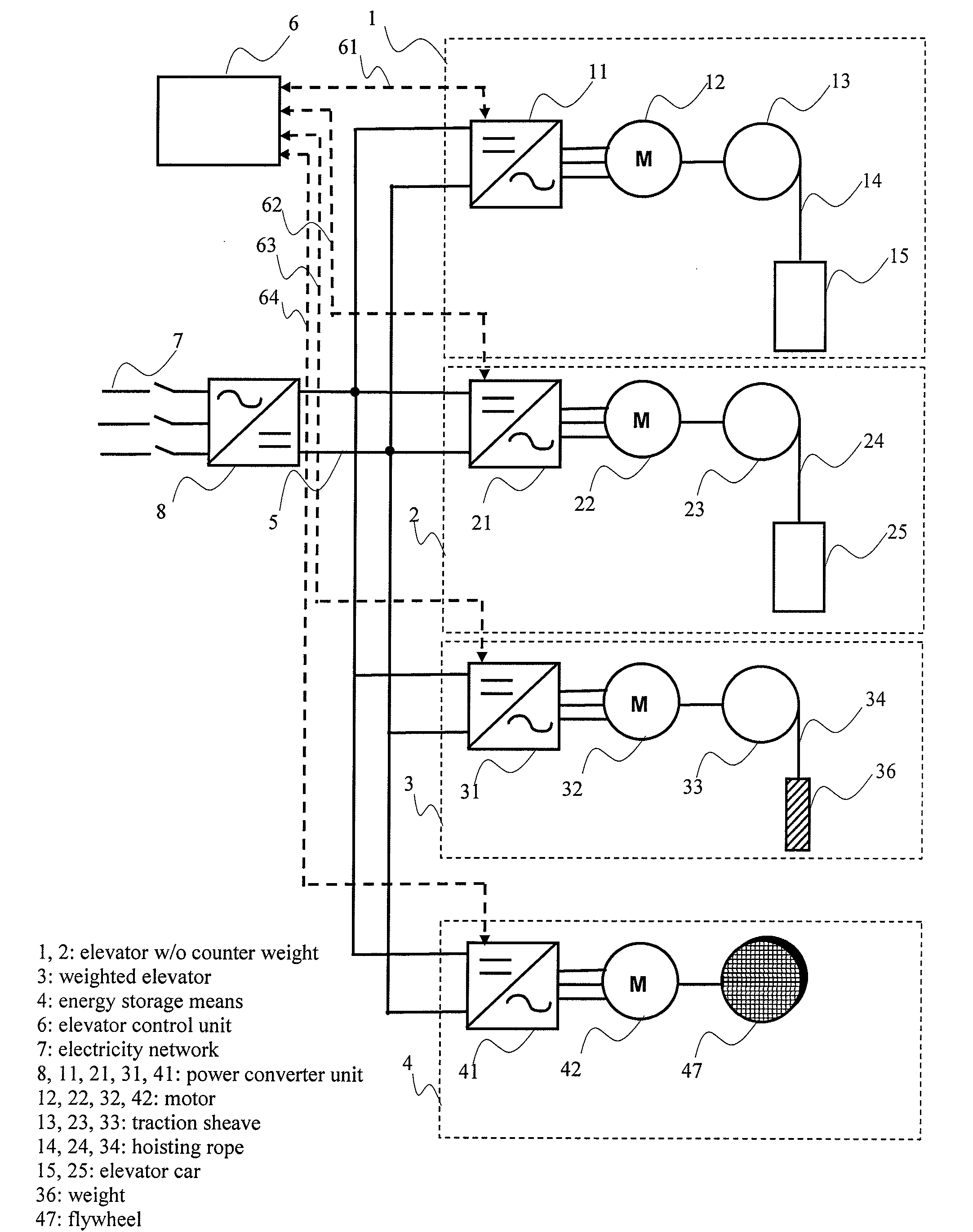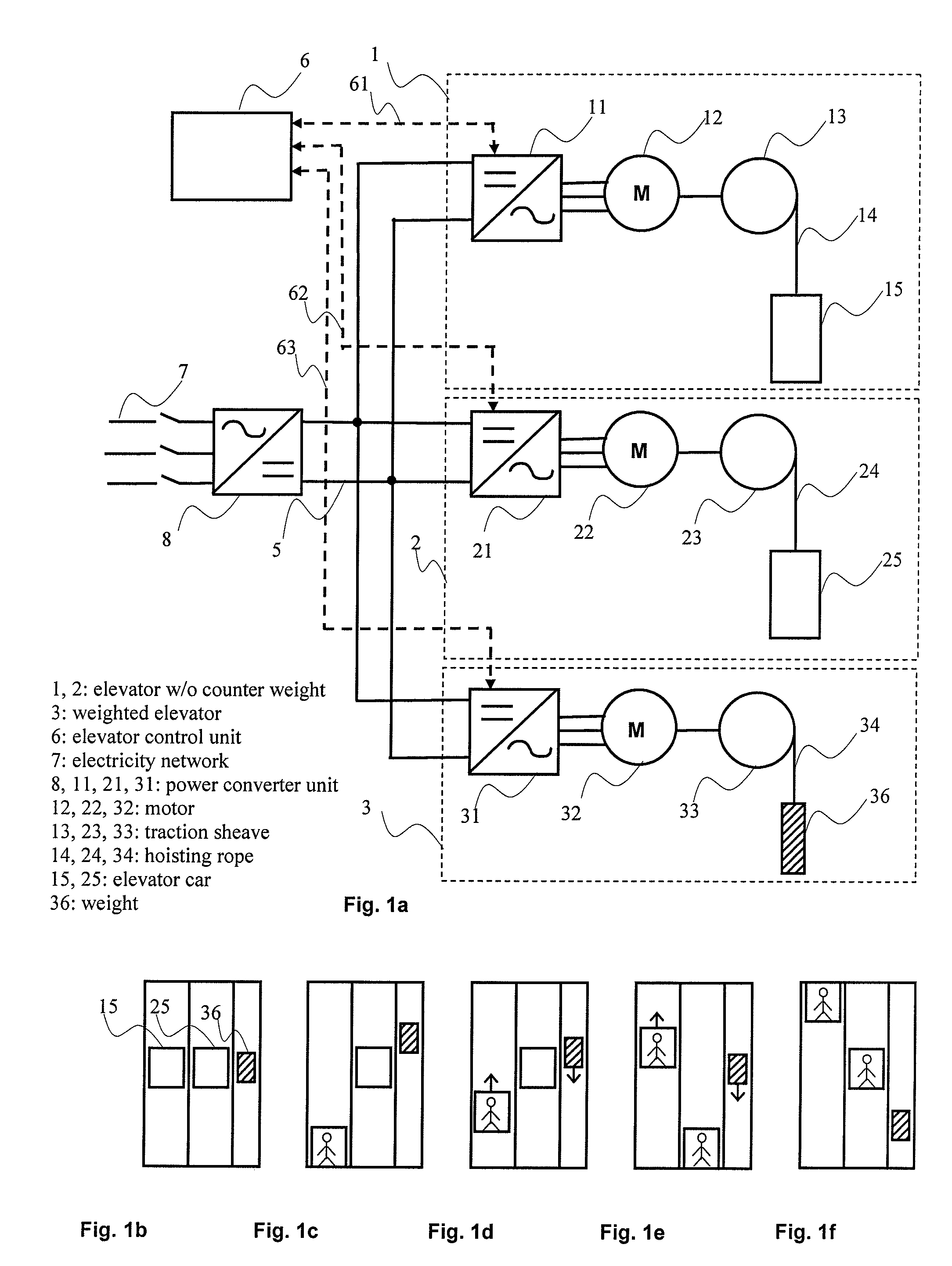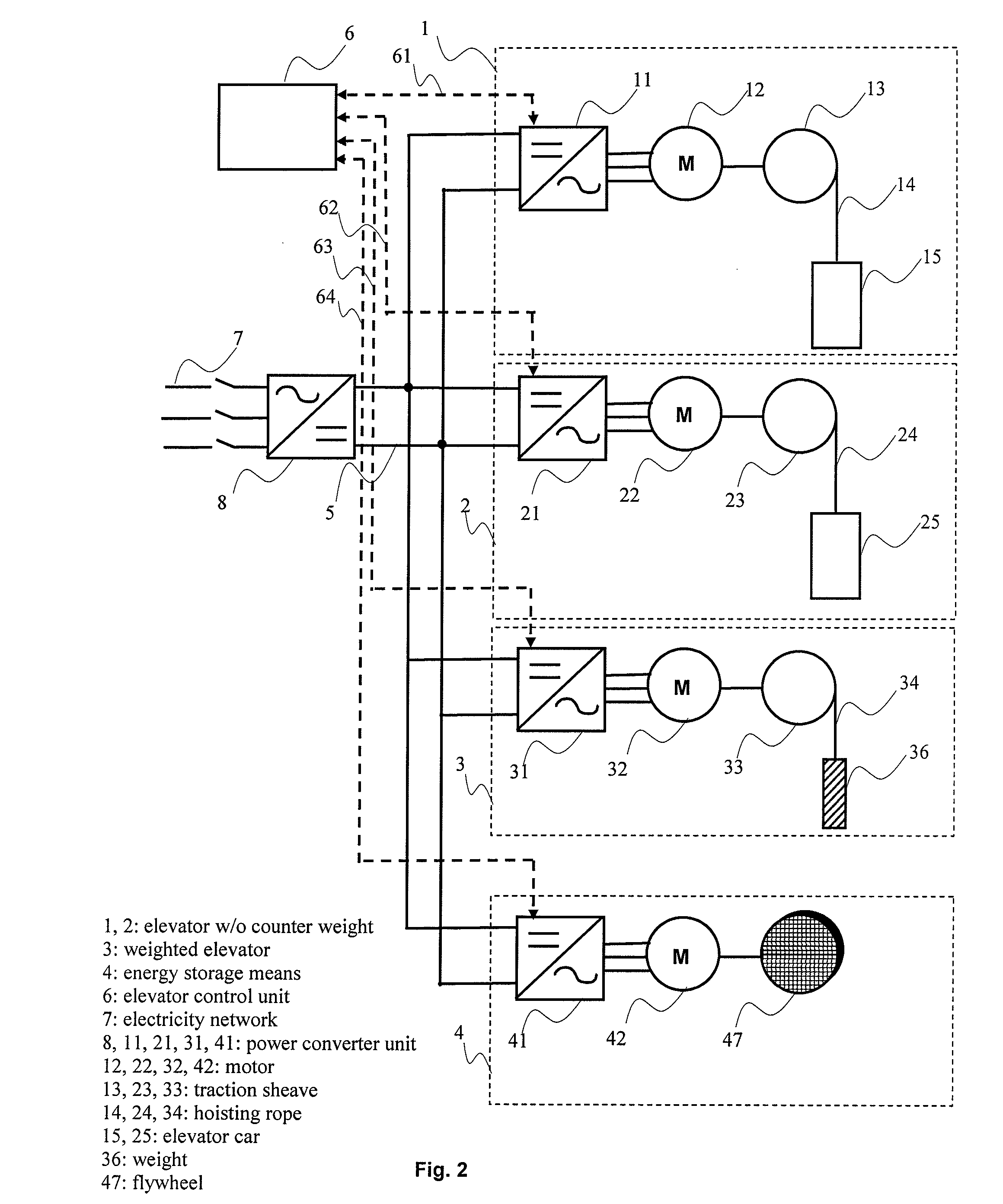Energy storage system for elevators
a technology for energy storage and elevators, applied in the field of elevator systems, can solve the problems of inability to operate in all operating situations, inability to discharge energy storage, and high power consumption of filter components in the mains inverter of elevator systems, so as to reduce the average power of the elevator system, reduce the total power, and discharge energy storage.
- Summary
- Abstract
- Description
- Claims
- Application Information
AI Technical Summary
Benefits of technology
Problems solved by technology
Method used
Image
Examples
Embodiment Construction
[0024]In non-counterweighted elevator systems, when the elevator car is moving downwards, potential energy of the elevator car is converted by the elevator motor into electric energy, and when the elevator car is moving upwards, its potential energy increases. As compared to counterweighted elevators, the instantaneous levels of power required and produced by non-counterweighted elevators are high. The power levels are proportional to the speed of the elevator. In the elevator system of the invention, one or more common energy storages are provided for an elevator or a number of elevators. The elevator system of the invention comprises at least one elevator without counterweight and means for storing mechanical energy and discharging an energy storage. When the elevator without counterweight is moving downwards, the change in potential energy of the elevator car can be at least partly converted into mechanical energy of the energy storage, and the energy stored in the energy storage...
PUM
 Login to View More
Login to View More Abstract
Description
Claims
Application Information
 Login to View More
Login to View More - R&D
- Intellectual Property
- Life Sciences
- Materials
- Tech Scout
- Unparalleled Data Quality
- Higher Quality Content
- 60% Fewer Hallucinations
Browse by: Latest US Patents, China's latest patents, Technical Efficacy Thesaurus, Application Domain, Technology Topic, Popular Technical Reports.
© 2025 PatSnap. All rights reserved.Legal|Privacy policy|Modern Slavery Act Transparency Statement|Sitemap|About US| Contact US: help@patsnap.com



